Do you have a question about the Cessna SKYCATCHER 162 and is the answer not in the manual?
Aircraft dimensions and layout in normal ground attitude, including key measurements.
Overview of the POH content and its purpose for the Cessna Model 162.
Provides detailed specifications for the aircraft's engine, propeller, and systems.
Details on fuel capacity, grades, and handling procedures, including warnings.
Information on oil specifications, viscosity, and capacity, crucial for engine maintenance.
Specifies the maximum allowable weights for ramp, takeoff, and landing.
Explains the purpose of Section 2, covering airplane and system descriptions.
Describes the all-metal, two-place, high-wing construction of the Cessna Model 162.
Details the conventional aileron, rudder, and elevator control system operation.
Covers the Garmin G300 avionics, PFD, engine instruments, and controls.
Explains the tricycle landing gear and hydraulically actuated disc brake system.
Describes the Teledyne Continental O-200-D engine and its controls, power, and instruments.
Details the fuel system components, quantity data, and fuel indicating system.
Covers the 14-volt DC system, battery, alternator, circuit breakers, and power outlets.
Outlines operating limitations, instrument markings, and placards for safe operation.
Defines critical airspeed limitations like VSO, VFE, VO, VA, VNE, and VNO.
Specifies limits for engine speed, oil temperature, and oil pressure for safe operation.
Details maximum ramp, takeoff, and landing weights, and baggage allowance.
Specifies approved maneuvers and recommended entry speeds, with warnings.
States approval for Day-Night-VFR operations only and prohibits known icing conditions.
Lists required placards in the aircraft, including flight limitations and warnings.
Explains procedures for establishing empty weight and moment, and loading calculations.
Lists all available Cessna equipment with item numbers, weights, and arms.
Step-by-step guide for accurately weighing the aircraft and determining CG.
Guides on using loading problems, graphs, and envelopes for safe operation within limits.
Provides a template for calculating weight and moment for typical flight configurations.
Chart showing acceptable loaded weight vs. moment to ensure CG is within limits.
Presents performance data charts to understand aircraft behavior under various flight conditions.
Explains how to interpret and use tabular performance data for accurate flight planning.
Demonstrates calculating performance metrics for takeoff, cruise, fuel, and landing.
Details takeoff distances, speeds, and factors affecting takeoff performance.
Covers cruise altitude, speed, fuel flow, and factors influencing cruise efficiency.
Provides data on landing distances and speeds under various conditions.
Lists stall speeds for different flap settings, bank angles, and conditions.
Shows maximum rate of climb data at various altitudes and speeds.
Covers procedures for coping with emergencies caused by malfunctions or weather.
Lists critical airspeeds for engine failures, forced landings, and glides.
Procedures for engine failures during takeoff, flight, and instrument warnings.
Steps for emergency landings without engine power, with engine power, and ditching.
Protocols for engine, electrical, cabin, or wing fires, including shutdown procedures.
Actions for inadvertent icing encounters, including airspeeds and instrument reliability.
Procedures for landings with partial instruments, flat tires, or open doors.
Detailed procedures for engine failures, glides, forced landings, and cloud operations.
Provides procedures for normal operations using standard and optional equipment.
Lists recommended airspeeds for takeoff, climb, approach, and balked landings.
Comprehensive checklist for inspecting the aircraft before flight, covering all areas.
Steps to follow before initiating engine start, including preflight checks and cabin preparation.
Detailed procedures for starting the engine using battery or external power, considering temperature.
Final checks and procedures performed before taxiing for takeoff.
Instructions for normal and short field takeoffs, including flap settings and climb speeds.
Guidelines for cruise flight, including power settings, leaning, and performance data usage.
Procedures for normal, short field, crosswind, and balked landings.
Covers factory recommended procedures for ground handling, care, and servicing.
Lists essential publications and aids furnished with the airplane and how to obtain more.
Checklist of required data, information, and licenses to be maintained with the airplane.
Details FAA required inspections and Cessna's recommended inspection programs.
Procedures for towing, parking, tiedown, and jacking the airplane safely.
Covers quantities, materials, and specifications for frequently used service items like oil and fuel.
Information on servicing and cleaning/care for the nose and main landing gear components.
Explains the significance of airspeed indicator markings and color codes.
Details color code significance for powerplant and electrical instrument ranges.
Lists all placards required to be displayed in the aircraft for operating limitations.
Explains the purpose of supplements for amended operating limitations and procedures.
Aircraft dimensions and layout in normal ground attitude, including key measurements.
Overview of the POH content and its purpose for the Cessna Model 162.
Provides detailed specifications for the aircraft's engine, propeller, and systems.
Details on fuel capacity, grades, and handling procedures, including warnings.
Information on oil specifications, viscosity, and capacity, crucial for engine maintenance.
Specifies the maximum allowable weights for ramp, takeoff, and landing.
Explains the purpose of Section 2, covering airplane and system descriptions.
Describes the all-metal, two-place, high-wing construction of the Cessna Model 162.
Details the conventional aileron, rudder, and elevator control system operation.
Covers the Garmin G300 avionics, PFD, engine instruments, and controls.
Explains the tricycle landing gear and hydraulically actuated disc brake system.
Describes the Teledyne Continental O-200-D engine and its controls, power, and instruments.
Details the fuel system components, quantity data, and fuel indicating system.
Covers the 14-volt DC system, battery, alternator, circuit breakers, and power outlets.
Outlines operating limitations, instrument markings, and placards for safe operation.
Defines critical airspeed limitations like VSO, VFE, VO, VA, VNE, and VNO.
Specifies limits for engine speed, oil temperature, and oil pressure for safe operation.
Details maximum ramp, takeoff, and landing weights, and baggage allowance.
Specifies approved maneuvers and recommended entry speeds, with warnings.
States approval for Day-Night-VFR operations only and prohibits known icing conditions.
Lists required placards in the aircraft, including flight limitations and warnings.
Explains procedures for establishing empty weight and moment, and loading calculations.
Lists all available Cessna equipment with item numbers, weights, and arms.
Step-by-step guide for accurately weighing the aircraft and determining CG.
Guides on using loading problems, graphs, and envelopes for safe operation within limits.
Provides a template for calculating weight and moment for typical flight configurations.
Chart showing acceptable loaded weight vs. moment to ensure CG is within limits.
Presents performance data charts to understand aircraft behavior under various flight conditions.
Explains how to interpret and use tabular performance data for accurate flight planning.
Demonstrates calculating performance metrics for takeoff, cruise, fuel, and landing.
Details takeoff distances, speeds, and factors affecting takeoff performance.
Covers cruise altitude, speed, fuel flow, and factors influencing cruise efficiency.
Provides data on landing distances and speeds under various conditions.
Lists stall speeds for different flap settings, bank angles, and conditions.
Shows maximum rate of climb data at various altitudes and speeds.
Covers procedures for coping with emergencies caused by malfunctions or weather.
Lists critical airspeeds for engine failures, forced landings, and glides.
Procedures for engine failures during takeoff, flight, and instrument warnings.
Steps for emergency landings without engine power, with engine power, and ditching.
Protocols for engine, electrical, cabin, or wing fires, including shutdown procedures.
Actions for inadvertent icing encounters, including airspeeds and instrument reliability.
Procedures for landings with partial instruments, flat tires, or open doors.
Detailed procedures for engine failures, glides, forced landings, and cloud operations.
Provides procedures for normal operations using standard and optional equipment.
Lists recommended airspeeds for takeoff, climb, approach, and balked landings.
Comprehensive checklist for inspecting the aircraft before flight, covering all areas.
Steps to follow before initiating engine start, including preflight checks and cabin preparation.
Detailed procedures for starting the engine using battery or external power, considering temperature.
Final checks and procedures performed before taxiing for takeoff.
Instructions for normal and short field takeoffs, including flap settings and climb speeds.
Guidelines for cruise flight, including power settings, leaning, and performance data usage.
Procedures for normal, short field, crosswind, and balked landings.
Covers factory recommended procedures for ground handling, care, and servicing.
Lists essential publications and aids furnished with the airplane and how to obtain more.
Checklist of required data, information, and licenses to be maintained with the airplane.
Details FAA required inspections and Cessna's recommended inspection programs.
Procedures for towing, parking, tiedown, and jacking the airplane safely.
Covers quantities, materials, and specifications for frequently used service items like oil and fuel.
Information on servicing and cleaning/care for the nose and main landing gear components.
Explains the significance of airspeed indicator markings and color codes.
Details color code significance for powerplant and electrical instrument ranges.
Lists all placards required to be displayed in the aircraft for operating limitations.
Explains the purpose of supplements for amended operating limitations and procedures.
| Manufacturer | Cessna |
|---|---|
| Model | SKYCATCHER 162 |
| Type | Light Sport Aircraft |
| Seating Capacity | 2 |
| Max Takeoff Weight | 1, 320 lb (599 kg) |
| Power Output | 100 hp (75 kW) |
| Cruise Speed | 118 knots (136 mph, 219 km/h) |
| Engine | Continental O-200 |
| Stall Speed | 45 knots |
| Range | 470 nmi (540 mi, 870 km) |
| Service Ceiling | 15, 000 ft |
| Fuel Capacity | 24 US gal (20 imp gal; 91 L) |
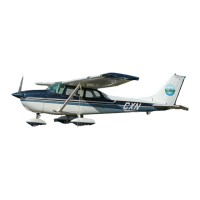
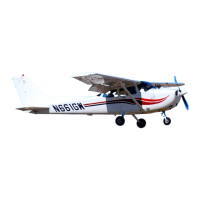
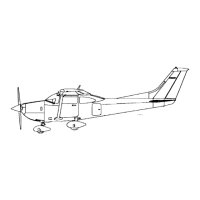
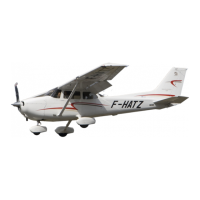
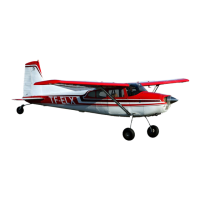
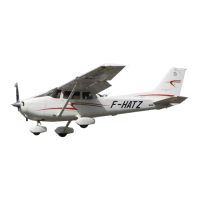
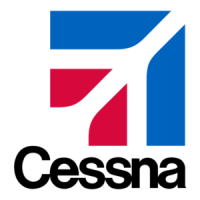

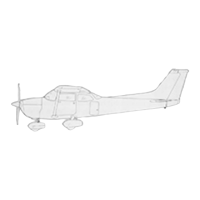

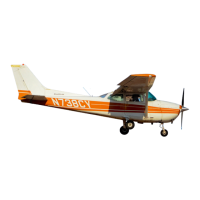

